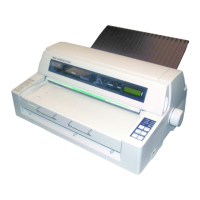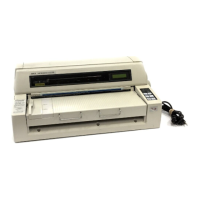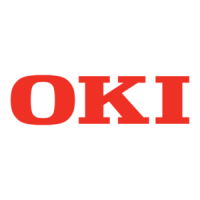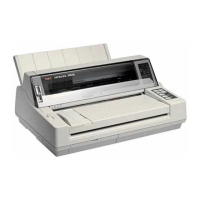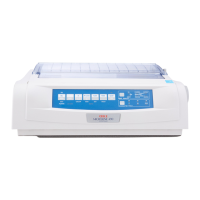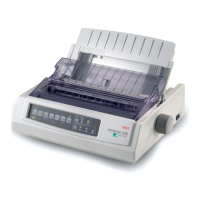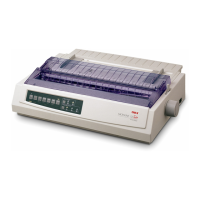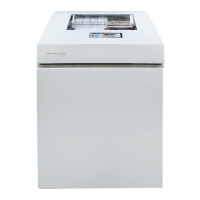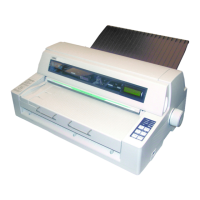
Do you have a question about the Oki MICROLINE 8810 and is the answer not in the manual?
| Color | No |
|---|---|
| Built-in barcodes | EAN13, PostNet, UPC-A, UPC-E |
| Maximum number of copies | 8 copies |
| Fonts included | 5 |
| Media thickness | 0.48 mm |
| Dimensions (WxDxH) | 598 x 397 x 235 mm |
| Power requirements | 120V-240V (±10%, 50Hz/60Hz) |
| Connectivity technology | Wired |
| Compatible operating systems | Windows Vista 32/64, XP, 2000, 98, NT 4.0, 2003 Server |
| Print direction | Bi-directional |
| Maximum duty cycle | 24000 pages per month |
| Mean time between failures (MTBF) | 10000 h |
| Sound pressure level (printing) | 55.5 dB |
| Power consumption (standby) | 25 W |
| Power consumption (typical) | 120 W |
| Storage temperature (T-T) | -20 - 60 °C |
| Operating temperature (T-T) | 5 - 40 °C |
| Operating relative humidity (H-H) | 30 - 85 % |
Describes the key capabilities and operational advantages of the printer.
Details the function of each individual switch on the printer's control panel when on or off line.
Quick guide to common printer operations like changing paper paths, print modes, and moving forms.
Instructions on how to switch the printer between Normal and Quiet print modes.
Detailed steps for loading single sheets or multi-part forms into the printer.
Steps to print the current printer menu configuration for reference.
Lists the main categories and sections covered in the printer's menu system.
Configures the printer's emulation mode, e.g., IBM PPR, Epson FX, ML.
Adjusts print mode, pitch, and proportional spacing for character output.
Selects character sets, language support, and code pages for print operations.
Configures multi-pass, graphics, buffer, data word, panel function, and eject condition.
Settings for sheet feed mode, CSF, print suppress, auto LF, auto CR, and interface pitches.
Settings for line spacing, page dimensions, wait time, and gap control for manual feed.
Configures auto alignment, position adjustments, and detection for manual feed.
Settings specific to the front Cut Sheet Feeder, including line spacing, page dimensions, and gap control.
Settings specific to the rear Cut Sheet Feeder, including line spacing, page dimensions, and gap control.
Settings for front feed, including line spacing, form tear-off, page dimensions, and gap control.
Settings for rear feed, including line spacing, form tear-off, page dimensions, and gap control.
Configuration for the parallel interface, including I-Prime, AUTO FEED XT, and Bi-Direction.
Settings for the serial interface, including parity, data, protocol, baud rate, and signals.
Fine-tuning for Top of Form (TOF) and Paper End (PE) positions across different feed paths.
Adjustments for dot alignment and print registration for precise output.
Step-by-step guide to disable the automatic paper alignment feature via the printer menu.
Explains the default TOF setting and the concept of custom TOF settings.
Instructions on how to set Top of Form using the printer's menu system.
Procedure to set a custom Top of Form position for continuous forms fed from the front.
Procedure to set a custom Top of Form position for single sheets or forms fed manually.
Guide to setting a temporary Top of Form position using control panel switches.
Steps to enable the Form Tear Off feature through the printer's Function Settings Menu.
How to use the SHIFT/TEAR switch to position continuous forms for tearing.
Performs a test print of ASCII characters to verify basic functionality.
Prints a sample of all available fonts to check font rendering.
Instructions to enter Hex Dump Mode for viewing raw printer data.
How to send data for testing and how to exit Hex Dump Mode.
Explains the printhead gap and the importance of proper setting for different media.
A table detailing manual gap settings and the types of paper they are used for.
How to temporarily change the printhead gap using control panel switches.
Steps to permanently set the printhead gap using the printer's menu system.
Guide to clearing paper jams when using single sheets or multi-part forms.
Steps to clear paper jams when using continuous feed paper.
Troubleshooting steps for persistent paper jamming issues.
Detailed instructions on how to remove and install a new ribbon cartridge.
Procedure for cleaning the interior of the printer to remove dust and debris.
Details width, length, and weight requirements for single sheets of paper.
Specifies width, length, and thickness for individual and continuous multi-part forms.
Details width, weight, and thickness for continuous single-part and multi-part forms.
Specifies operating and storage temperature and humidity ranges.
Details voltage requirements and power consumption levels for the printer.
Introduces the software utilities provided for printer management and setup.
Explains the methods for accessing the printer utilities via CD or download.
Explains the purpose of LPR and how to install it for network printing.
Details the information displayed in the LPR status box for monitoring print jobs.
Introduces the DIPUS utilities for controlling the printer from a computer.
Describes Status Monitor, Menu Setup, Top of Form, and Switch Setup utilities.
Guide on how to install and use the Network Setup Utility for network configuration.
